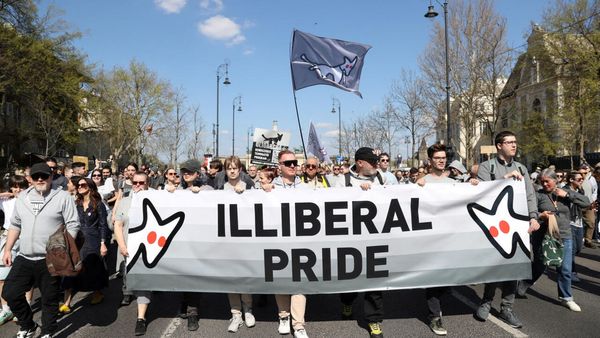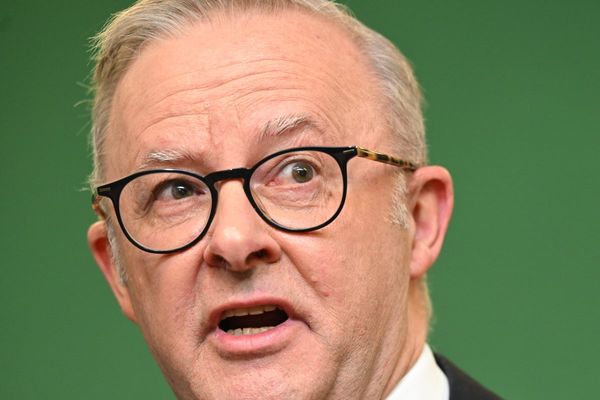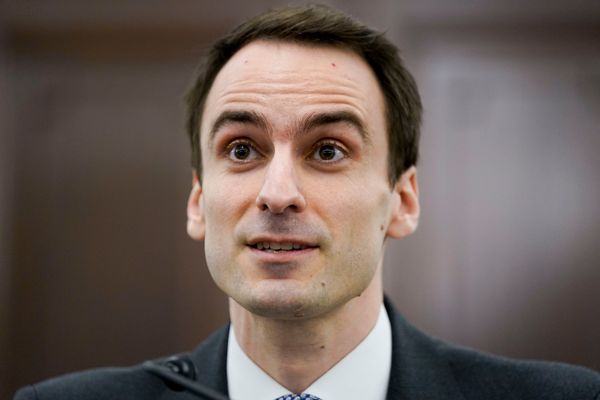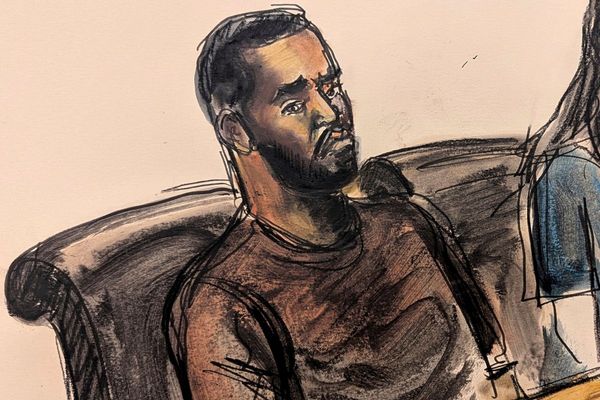From McCarthyism to public school desegregation to Lyndon B. Johnson’s Great Society programs, and now to another Trump administration, Diane Ravitch, a Houston native, has witnessed and written about the history of education. She served as assistant secretary of education under President George H.W. Bush, before joining New York University as a research professor of education from the 1990s through 2020. As a professor, Ravitch changed her opinions on high-stakes testing and school privatization through charter schools and voucher programs, and she criticized W. Bush’s “No Child Left Behind” in her book Death and Life of the Great American School System: How Testing and Choice Are Undermining Education. She also founded Network for Public Education, a national public education advocacy group. Ravitch spoke to the Texas Observer about attending Houston’s public schools during McCarthyism and about how Trump’s second administration could impact public schools and students.
TO: While many of our readers know who you are, they might not know about your Houston connections. Tell us more.

I was born in Houston in 1938 and my parents ran one, two, or three liquor stores at any given moment. They were working-class people, although they didn’t consider themselves working class. I went to Montrose Elementary School, which [later became] the Houston High School for Performing Arts. And then I went to the Albert Sidney Johnston Junior High School [now the Meyerland Performing and Visual Arts Middle School]. Then I went to San Jacinto High School, which I think is now the Houston Community College.
I was in Houston public schools during the McCarthy Era, and [the school] board alternated every couple of years, and it would sometimes be run by the Minute Women. And the Minute Women were the female equivalent of the John Birch Society. When they came into power, there was a reign of terror, because teachers were told what they couldn’t teach, and they had to be very careful because the Minute Women would come and sit in the back of classes to monitor what the teachers were saying. Periodically they would get thrown out, and a moderate board would come in. The other thing that happened that was really huge when I was in high school was the Brown [v. Board of Education] decision came down. All of my schools were segregated. They were all white. … The Houston school board said that it would never desegregate. And obviously, things change.
While people may know about Trump and Project 2025’s plans to eliminate the U.S. Department of Education, they might not know what the agency does and how its elimination could impact their schools and their children. Can you explain?
His plan is actually Project 2025 and during the election, he pretended he never heard of it, didn’t know who was behind it, and now its key figures have been hired for his new administration. So clearly Project 2025 reflects what he wants to do. What you have to understand about the department is that it’s not a department that tells people what to teach. They’re actually forbidden by law to do anything about curriculum. But what they do is they hand over money. And the law that was passed under [President] Lyndon B. Johnson, called the Elementary and Secondary Education Act (ESEA), the purpose of that law was to have equitable funding, because the schools, particularly in the South but in other areas as well, were so underfunded; they had so many impoverished kids. The purpose was to make sure that wealthy states were helping to raise up underfunded states. It has not eliminated the inequities, but it was a step in that direction.
There are two big programs that the Department of Education administers. Title I of the ESEA sends money to schools that have large numbers of very poor kids. The Department of Education is one of the smallest departments in the federal government, but [its] biggest flow of money is Title I. The other big one is IDEA (Individuals with Disabilities Education Act), which is for handicapped kids or kids with disabilities. The money for kids with disabilities is supposed to go to kids with disabilities wherever they are.
So [funding for] those two programs and almost everything else, under Project 2025, would be sent to the states and turned into what the Republicans call block grants. A block grant means it’s no longer categorical. The state gets this tranche of money, and they [decide.] So the money for kids with disabilities might be diverted to some other purpose. The money for kids in poverty might be diverted for some other purpose. And the language of Project 2025 says that, in time, the money would be cut off.
In states like Texas, which has a legislature targeting vulnerable populations like LGBTQ+ students, demonizing any mention of diversity, equity, and inclusion (DEI) or race, and which has chronically underfunded students with special needs, how does the U.S. Department of Education provide some protections for Texans?
Defending civil rights in education is one of the major functions of the Department of Education. The big hammer that the department has right now, which is seldom used, is to say, “We will not send your funding until you comply with a judicial order.” Once they’ve given all the money away, they have no power to do anything.
There is an Office of Civil Rights in the Education Department that could be moved over to the Justice Department.
How likely do you think it is that Trump will be able to eliminate the Department of Education, given he needs a supermajority in Congress to do this?
They can’t eliminate the Department of Education without Congress. Congress has to legislate reorganizing the department and moving things around. I think he probably won’t have the votes. They have such a narrow margin in both houses that it just takes enough Republicans who say, “I don’t like the way this is going. I’m not going to support it.” So I think the department will survive, but with leadership that’s not very friendly to the functions of the department.
What do you make of Trump’s recent pick for education secretary, Linda McMahon?
I feel relieved, because the names that I had heard on his short list were people who were very engaged in culture war battles, and she doesn’t seem to be. She’s a businesswoman, first and foremost. She ran a wrestling empire, and she served a year on the Connecticut Board of Education, so that’s a plus. But that was a fairly long time ago, and that typically doesn’t qualify you to be secretary of education. But if you were to ask what her education views are, I’d say, from what I’ve read of her stuff, she believes in parent choice.
I think about [other candidates Trump considered] like Byron Donalds, from Florida, and he would have been a terrible choice. His wife is very active in Moms for Liberty. These are people who actively believe in censorship, who are opposed to vaccines, opposed to any kind of public health measures in public schools, and so they have a record of being very hostile to public schools. And I don’t know what Linda McMahon believes about education in general. … But she’ll do whatever Trump wants. And what Trump wants is to destroy public education.
In Texas, there’s a huge battle against vouchers for private schools. What does Trump have in mind for a federal level education savings account program, and what would it mean for states, particularly when you just had voters in three states vote against vouchers in ballot initiatives?
The two big programs would be voucherized, and kids with disabilities could take their IDEA funding and their Title I funding, and use it in any kind of educational setting, including homeschooling. What they’re going to try to do with federal dollars is to voucherize as much as possible. Private schools and religious schools are not supported by Title I, but if they manage to voucherize it, which they could do probably more easily than eliminating the department, then federal funding would become a voucher.
The irony of the voucher issue is that whenever vouchers have been put to a vote, they’ve lost. For instance, in Florida, there was a referendum on vouchers in 2012, and Jeb Bush was the major promoter of what was called a Religious Freedom Amendment. And to vote against vouchers meant that you had to vote against religious freedom, right? And it only got 55 percent [less than the required supermajority]. But typically, the vote against vouchers is usually between 65, 70, and even 80 percent. Betsy DeVos sponsored a voucher referendum in Michigan, in November 2000 and it lost [by a wide margin]. So when you look at all these referendums, you think the public likes public schools. They want to support their public schools because they know them, and they don’t want to see public money going to religious schools.
In the United States, we talk about education as being the great equalizer from K-12 public schools to college. How will Trump’s plans impact that ideal for students?
I’ve never heard Trump say anything about equality or equity. They’re not in his vocabulary. Parents choose—that’s the most important value. The other way of looking at education would be to say public schools provide equal opportunity for everyone, and they should provide equal opportunity. They frequently don’t, but they should, and that’s the goal. The idea was that if everybody had a fair shot, everybody would be able to develop their talents and abilities to the fullest, and that would be good for society. That was the whole rationale for public education from the beginning. If you go back and look at the works of Horace Mann, who was considered the father of public education, he talked about public schools being a means of social equality.
Now that we have a number of states with vouchers, I might add that most vouchers are being used by affluent kids. The majority of vouchers in every state with vouchers are taken by kids who never attended public school. So it turns out to be a subsidy for the upper middle class and the wealthy because they’re already sending their kids to a school that costs, say, $15,000 [a year] and the states are saying to them, “We’ll pay half your tuition.” They started the voucher push by saying, “We have to save poor minority kids from failing public schools.” Then they said, “Let’s add this and that.” And then they say, “Why shouldn’t everybody get a voucher?” Because what they really want to do is to underwrite school for the people who vote for them, for the people who are well off, and that’s who’s taking the vouchers. So, it turns out that vouchers are going back to their original purpose, which is to preserve segregation. The whole voucher movement got its start in response to Brown v. Board of Education.
For public education advocates, where’s the hope?
You just have to keep fighting … because things change. I look back on my life, and during the McCarthy Era there was a lot of hopelessness. And yet he’s gone, and the movement he stood for was killed—but it is back again.
We have to do our best to fight for the future of our country, and to fight for the future of Texas, and for the future of the children.
This interview has been edited for length and clarity.








